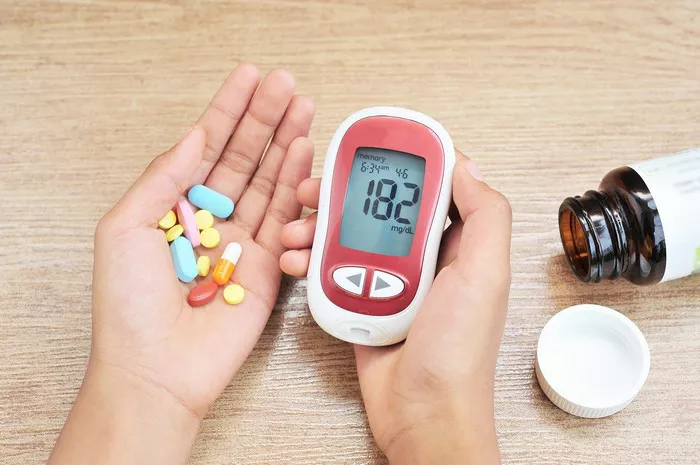Insulin resistance is a critical component of metabolic dysfunction, playing a central role in the development of various chronic diseases. This condition, which affects millions worldwide, disrupts the body’s ability to utilize insulin effectively. To appreciate the full impact of insulin resistance, it’s essential to delve into how it alters metabolic processes, influences disease risk, and affects overall health.
What Is Insulin Resistance?
Insulin resistance occurs when the body’s cells become less responsive to the hormone insulin. Insulin, produced by the pancreas, is crucial for regulating blood glucose levels. It facilitates the uptake of glucose from the bloodstream into cells, where it is used for energy or stored for future use. When cells become resistant to insulin, glucose accumulates in the bloodstream, leading to elevated blood sugar levels—a hallmark of insulin resistance.
Pathophysiology of Insulin Resistance
The development of insulin resistance involves a complex interplay of genetic, environmental, and lifestyle factors. At the cellular level, insulin resistance is characterized by reduced insulin receptor sensitivity and impaired signaling pathways. These disruptions hinder the ability of insulin to bind to its receptor, which prevents the activation of glucose transport proteins responsible for glucose uptake.
Several mechanisms contribute to this impaired insulin signaling:
Inflammation: Chronic low-grade inflammation is a significant contributor to insulin resistance. Adipose tissue, particularly visceral fat, secretes pro-inflammatory cytokines that interfere with insulin signaling pathways. These inflammatory markers impair the function of insulin receptors, leading to reduced cellular response.
Oxidative Stress: Increased oxidative stress, caused by an imbalance between free radicals and antioxidants, can damage insulin receptors and other components of the insulin signaling pathway. This oxidative damage exacerbates insulin resistance by impairing cellular function.
Lipid Accumulation: Excessive accumulation of lipids, particularly in muscle and liver tissues, can disrupt insulin signaling. Lipid intermediates such as diacylglycerol and ceramides have been shown to interfere with insulin receptor function and contribute to insulin resistance.
Genetic Factors: Genetic predisposition plays a role in the development of insulin resistance. Variations in genes involved in insulin signaling, glucose metabolism, and inflammatory responses can increase an individual’s susceptibility to insulin resistance.
Systemic Effects of Insulin Resistance
Insulin resistance has far-reaching consequences for various bodily systems. Its impact extends beyond glucose metabolism, influencing cardiovascular health, liver function, and more.
1. Metabolic Syndrome
Metabolic syndrome is a cluster of conditions associated with insulin resistance, including:
Abdominal Obesity: Excessive fat accumulation around the abdomen is a key feature of metabolic syndrome. Visceral fat, in particular, is linked to increased insulin resistance due to its role in inflammation and lipid metabolism.
Hyperglycemia: Elevated blood glucose levels are a direct consequence of impaired insulin action. Chronic hyperglycemia can lead to type 2 diabetes if left unmanaged.
Dyslipidemia: Insulin resistance often results in abnormal lipid levels, including elevated triglycerides and reduced HDL cholesterol. These lipid abnormalities contribute to an increased risk of cardiovascular disease.
Hypertension: High blood pressure frequently accompanies insulin resistance. The mechanisms linking insulin resistance and hypertension include increased sympathetic nervous system activity and changes in renal function.
2. Type 2 Diabetes
Insulin resistance is a precursor to type 2 diabetes, a condition characterized by chronic hyperglycemia. As insulin resistance progresses, the pancreas initially compensates by producing more insulin. However, over time, this compensatory mechanism becomes insufficient, leading to persistent high blood sugar levels. The progression from insulin resistance to type 2 diabetes involves a gradual decline in pancreatic beta-cell function, exacerbating glucose dysregulation.
3. Cardiovascular Disease
Insulin resistance is a major risk factor for cardiovascular disease. The relationship between insulin resistance and cardiovascular health is multifaceted:
Atherosclerosis: Elevated blood glucose and lipid levels associated with insulin resistance contribute to the development of atherosclerosis. This condition involves the buildup of plaque in arterial walls, leading to reduced blood flow and increased risk of heart attacks and strokes.
Endothelial Dysfunction: Insulin resistance impairs endothelial function, which is critical for maintaining vascular health. Endothelial dysfunction leads to reduced nitric oxide production, increased vascular inflammation, and enhanced platelet aggregation.
Increased Coagulation: Insulin resistance is associated with a pro-thrombotic state, characterized by increased blood clotting tendencies. This heightened coagulation risk further contributes to cardiovascular disease.
4. Liver Dysfunction
Insulin resistance has significant implications for liver function:
Non-Alcoholic Fatty Liver Disease (NAFLD): NAFLD is a common liver condition associated with insulin resistance. The accumulation of fat in liver cells impairs liver function and can progress to more severe conditions such as non-alcoholic steatohepatitis (NASH) and cirrhosis.
Increased Gluconeogenesis: Insulin resistance leads to increased glucose production by the liver through gluconeogenesis. This contributes to elevated blood glucose levels and further exacerbates hyperglycemia.
5. Reproductive Health
Insulin resistance can impact reproductive health, particularly in women:
Polycystic Ovary Syndrome (PCOS): PCOS is a common endocrine disorder characterized by insulin resistance, elevated androgen levels, and ovarian cysts. Insulin resistance plays a role in the development of PCOS by disrupting normal ovarian function and contributing to hormonal imbalances.
Pregnancy Complications: Insulin resistance during pregnancy can lead to gestational diabetes, a condition associated with increased risks for both mother and baby. Gestational diabetes can impact fetal development and increase the likelihood of developing type 2 diabetes later in life.
Lifestyle Interventions and Management
Managing insulin resistance involves a multifaceted approach that includes lifestyle modifications, medical interventions, and ongoing monitoring.
1. Dietary Changes
A balanced diet is crucial for managing insulin resistance:
Low Glycemic Index Foods: Foods with a low glycemic index have a slower impact on blood glucose levels, reducing insulin spikes and improving overall glucose control.
Fiber-Rich Foods: High-fiber foods, such as fruits, vegetables, and whole grains, can enhance insulin sensitivity by slowing glucose absorption and reducing blood sugar levels.
Healthy Fats: Incorporating sources of healthy fats, such as avocados, nuts, and olive oil, can improve lipid profiles and support metabolic health.
2. Physical Activity
Regular physical activity is a cornerstone of managing insulin resistance:
Aerobic Exercise: Activities such as walking, jogging, and swimming improve insulin sensitivity by increasing glucose uptake in muscles and reducing fat accumulation.
Strength Training: Resistance exercises help build muscle mass, which enhances glucose uptake and improves overall insulin sensitivity.
3. Weight Management
Achieving and maintaining a healthy weight is crucial for managing insulin resistance. Weight loss, particularly reduction in abdominal fat, can significantly improve insulin sensitivity and reduce associated health risks.
4. Pharmacological Interventions
In some cases, lifestyle modifications alone may not be sufficient, and pharmacological interventions may be necessary:
Metformin: Metformin is a commonly prescribed medication for insulin resistance and type 2 diabetes. It improves insulin sensitivity and reduces glucose production by the liver.
Thiazolidinediones: Thiazolidinediones, such as pioglitazone, are another class of medications that enhance insulin sensitivity by acting on adipose tissue and muscle cells.
See also: How Long Does It Take to Break Insulin Resistance?
Conclusion
Insulin resistance is a complex and multifaceted condition with widespread implications for overall health. Its impact on glucose metabolism, cardiovascular health, liver function, and reproductive systems underscores the importance of early detection and effective management. By understanding the mechanisms underlying insulin resistance and implementing appropriate lifestyle and medical interventions, individuals can mitigate its effects and reduce the risk of associated chronic diseases. Ongoing research continues to shed light on the intricate relationship between insulin resistance and various health outcomes, offering hope for improved strategies in prevention and treatment.
Related topics:
How to Reduce Insulin Resistance


























